The author is a fellowship recipient of human rights, media and transitional justice training organized by AJI Banda Aceh, KontraS Aceh, LBH Banda Aceh and AJAR.
[Diky Zulkarnen/Sinar Pidie]
On Tuesday morning of 24 July 2000, Aminah Ali, 65 years old, altogether with twenty other women left Gampong Pulo Keunari. They walked, marched for three kilometers along the Tiro River, across a suspension bridge and passed through Lhok Panah. They headed for Gampong Cot Murong, Sakti District.
They wanted to visit the houses of seven villagers who died. There should have been one funeral home left to visit, but they were stopped by the gunfire heard from the direction of Pulo Keunari, their village.
"After hearing the sound of gunshots, we chose to stay for some more time in the sixth house," said Aminah Ali, Monday, 19 January 2021.
After the gunshots subsided, Aminah Ali and her companions decided to go straight back to Pulo Keunari. They arrived around 15.00 WIB and found most of their houses had been burnt down. The village had no male residents left. They fled to the mountains of Cot Rheng, Cot Cukok and Gle Sala.
Aside from debris, the women also find three male dead bodies. "Two bodies are our villagers. Teungku Makam and M Yusuf," said Aminah.
Tengku Makam, an elder, was in the house when Brimob personnels burned his house. M Yusuf, 21 years old at the time, was shot. Another victim was Teungku Rasyid Batee, a traveling salt seller from Batee who at that time was crossing Tiro by pedaling his onthel bicycle, was thrown into the flames by Brimob personnels.
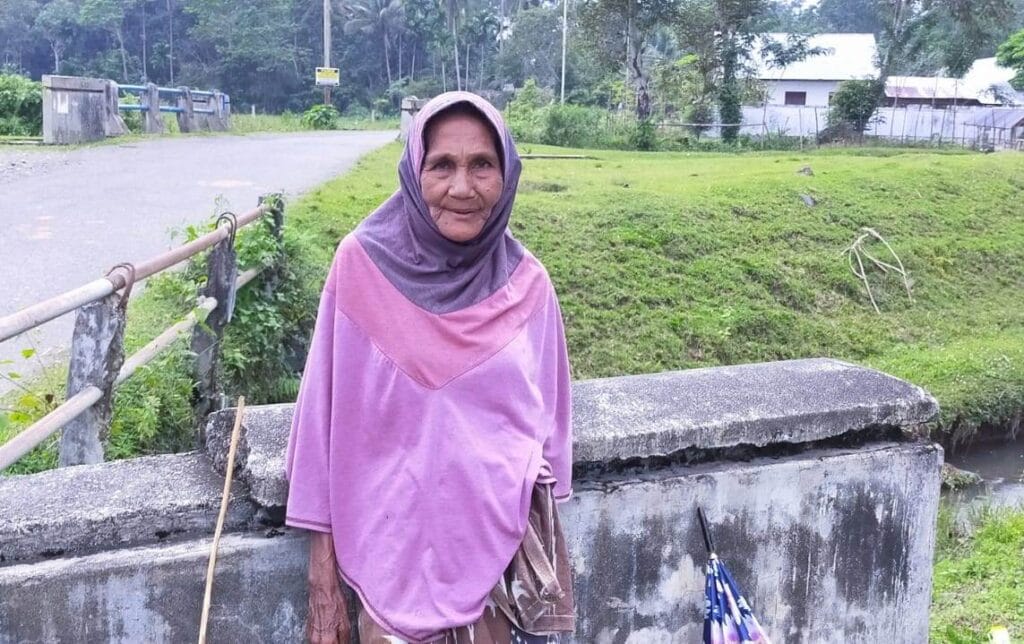
"The next day, we dug two graves to bury them," said Aminah.
On the other hand, Rasyid's body was returned to his family in Batee – about 30 kilometers from Tiro. Brimob BKO Tiro burned 25 houses, 27 taverns and a rice mill in Gampong Pulo Keunari on Tuesday, 24 July 2000. Apart from that, Brimob also slaughtered the residents' livestocks.
The devastation was preceded by the shooting of two Brimob BKO Tiro personnels from Pioneer Regiment II at Gampong Pulo Keunari Monument on the same day. The unit was stationed in Mapolsek Tiro/Truseb complex in Gampong Mancang.

Pulo Keunari is located in the south of Sigli, the capital city of Pidie Regency, about 40 minutes by vehicle from Banda Aceh-Medan Road. This village territory is around 8.96 square kilometers and is surrounded by the residents' rice fields. Most of the residents work as farmers.
"The total population of Pulo Keunari in 2001 was estimated at around 500 people, consisting of 200 men and 300 women," said Ilyas, Keuchik Gampong Pulo Keunari, Monday, 19 January 2021.
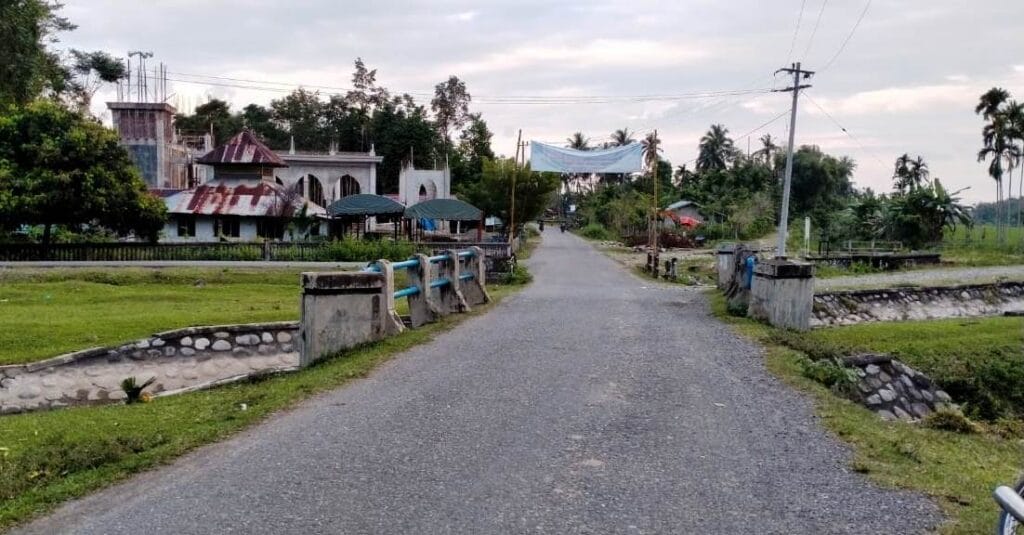
Twenty years after the incident, population increased by about 100 people.
The next day after the devastation of Pulo Keunari, Brimob marched towards Dusun Labo Adang, Gampong Peunadok. 27 houses in Dusun Labo Adang were destroyed in flames. On the same day, they also burned 25 houses, 1 rice mill and 1 tavern in Dusun Peulandok, Gampong Pulo Glumpang. Both are still within Tiro District.
***
The news that Brimob had entered Dusun Peulandok, Gampong Pulo Glumpang, Tiro/Truseb District, reached Nurhayati, 56 years old. That day she was sitting out in the bamboo chair at her porch. She was with her two children, Sitihawa and Aswadi, as well as her cousin Raimah. Nurhayati immediately led her two children into the house, while Raimah returned to her house. Five other women also entered Nurhayati's house.
“They chose to hide in my house because it was semi-permanent. If shootings occur, they thought they can hide behind the walls," said Nurhayati, Tuesday, 19 January 2021.
Not long after, Brimob arrived in front of Nurhayati's house. Personnels of this elite police unit tosses on Nurhayati's house, causing it's glasses to broke. "Open the door! Open the door!" said Nurhayati, imitating one of the Brimob personnel's words at that time.
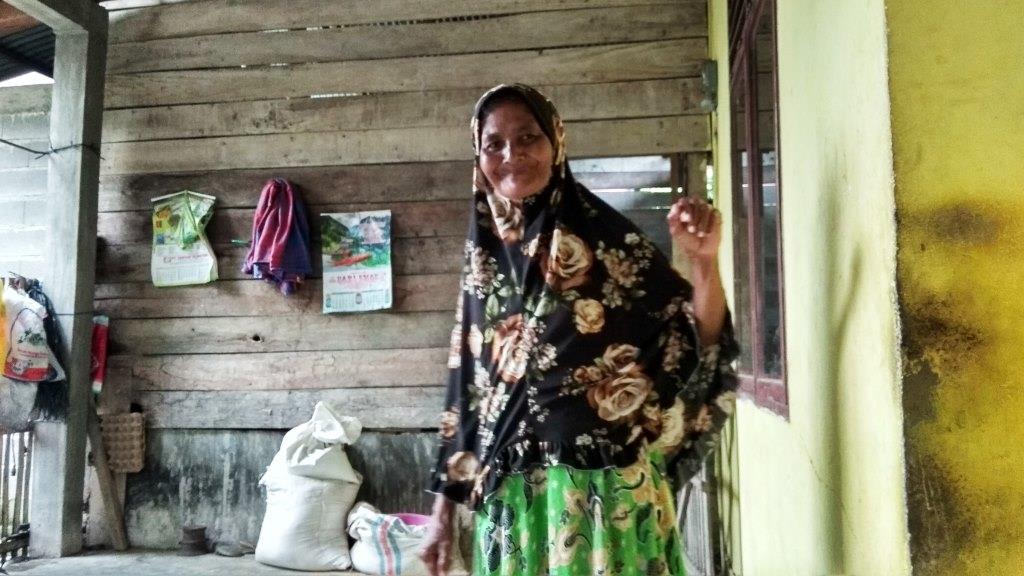
Nurhayati then opened the door. A Brimob personnel entered the house. The troop then ordered the women in the house including the children to come out.
"I was not allowed to go out. I stayed alone in the house,” said Nurhayati.
Intrigued by what was happening outside, Nurhayati got up from her seat to look outside. However, one Brimob personnel swung the rifle butt at Nurhayati's face. Nurhayati did not give up. She looked out again. The Brimob personnel swung the rifle butt again. The rifle butt hit Nurhayati in the face five times.
"Four of my teeth fell out," said Nurhayati.
Nurhayati still did not give up. With her face covered in blood, she broke through Brimob's siege to get out of the house. She ran towards her neighbor's house which was about twenty meters away from where she was surrounded. At her neighbour's house, she saw her two children and a number of other women lined up. They were lined up under a coconut tree. Then, Brimob personnels shot coconuts. The objective was for the coconuts to fall on the women's heads.
Bored with the game, Brimob personnels then let the women go. They continued to burn people's houses.
On that same day, Nurhayati, her two children and her cousin left Pulo Glumpang on foot. They sought refuge in Gampong Usi Campli, Mutiara Timur District, which is about seven kilometers from their village. Maharaja, 67 years old, Nurhayati's husband, welcomed his wife and two children with a hug.
Two days later, Nurhayati and her family returned to Peulandok. Because their house had turned into debris, they stayed at the house of a relative who had survived the devastation for temporary.
Nurlaili, 43 years old, a resident of Gampong Pulo Keunari, also did the same thing. During the days after the devastation, she took shelter in the house of a resident who survived the Indonesian military rampage. "There we slept cramped up in one house," she said, Monday, 19 January 2021.
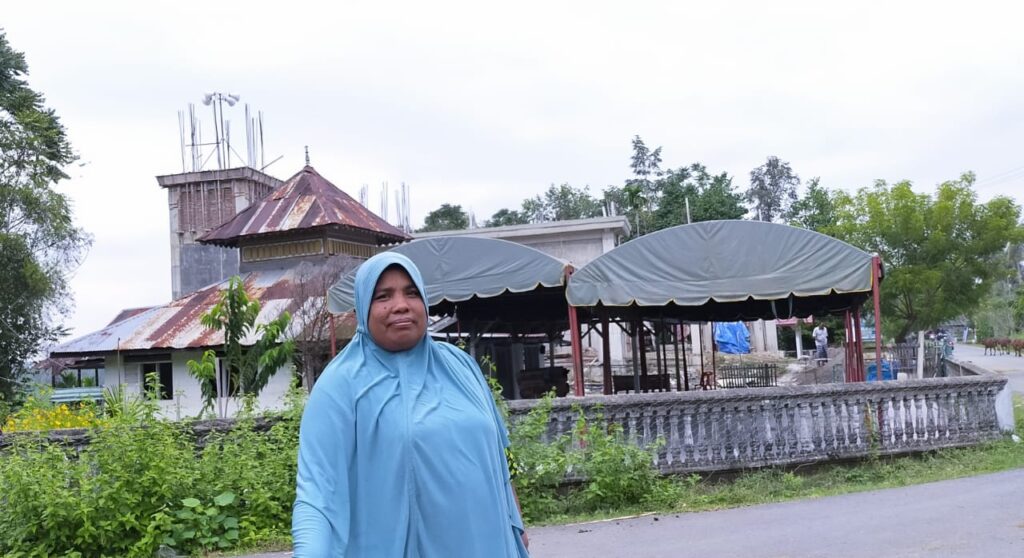
Meanwhile, women from Labo Adang, Gampong Peunandok, fled to Meunasah (Surau) Labo Adang for three months.
"At that time we lived our lives by sharing food, clothes and whatever else we could share," said Warni Idris, 48 years old, a resident of Dusun Labo Adang, Gampong Peunandok.
***
After the Tiro incident, Brimob personnels entered the surrounding villages almost every morning. They also pay visit to the evacuation center at Meunasah Labo Adang. Their aim was to collect information on the whereabouts of GAM members. Aminah Ali said that young people who already had ID chose to leave Pulo Keunari and mostly other villages in Tiro district.
"Their family sent them to live in their relatives' houses in Banda Aceh, Sigli and Lhokseumawe," she said.
In 2002, people's houses which were burned and destroyed by Brimob's Pioneer Regiment were rebuilt by the government. Tavern owners were given compensation of Rp 45 million per unit.
However, the help had forgotten one thing. "We did not receive any assistance for trauma recovery after the incident. Everything just goes away with the passage of time," said Nurlaili.
Three months after the Pulo Glumpang incident, Nurhayati exposed, she had several times followed the wrong Qibla direction when she held prayers. "I was scared for more than three months. In the fourth month, I went to see a doctor in Sakti District. The doctor said that I was afraid and traumatized," said Nurhayati.
Aminah Ali hopes that similar incidents will not happen again. “Our trauma wouldn't want to go away once we recalled the incident. However, we can only ask and pray to Allah for this kind of incident to not happen again," said Aminah Ali.
She wishes for no more violence and terror in their lives. "Let our lives here be safe and peaceful so that we can be free to work and make a living in the mountains and rice fields," she said.
***
The coordinator of Pulih Aceh Foundation, Dian Marina, 48 years old, said that everyone who has ever been arrested, interrogated, threatened, yelled at, and witnessed incidents of extraordinary violence during the armed conflict between GAM and Indonesian Government, has various resistance or resilience between one and the other. "This resilience really depends on each person who has experienced violence in the past and the scale of the incident," she said on Sunday, 24 January 2021.
In general, victims who have experienced and witnessed violence in the past may experience post-traumatic stress disorder (PTSD). “Until now, the image of that incident is still there and never got lost from their head. It's invisible on the surface, but if there's a trigger, the scene will reappear. Whenever someone asked about their past events, for example. Let's say the person who hit them earlier was wearing camouflage clothes, whenever they see any camouflage shirt, their memory of past events will be able to come back and then they become hysterical," said Dian, explaining the first impact.
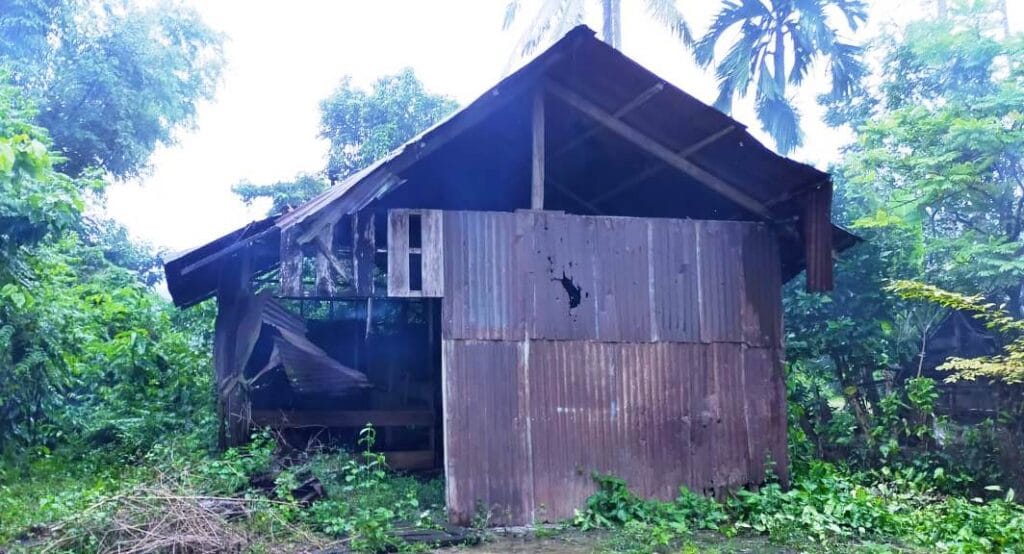
In addition, another impact experienced by victims is a loss of concentration and sensitivity. “If they saw people being hit, they would be ignorant. They are already numb," she said.
The third impact, according to Dian, is social interactions and relationships breakdown. "The victims don't like being questioned and they don't like being in crowds," she said.
If the trauma experienced by these victims is not healed, she added, it will have an impact on changing the character so that the violence that has been experienced, seen and carried out will move to the domestic sphere. "In former conflict areas, parents who beat their children up are a bit scary," she said.
Supposedly, victims of past violence should be treated by a psychologist or psychiatrist. “Their (the victims') trauma must be dismantled. There has to be some recovery effort," she said.
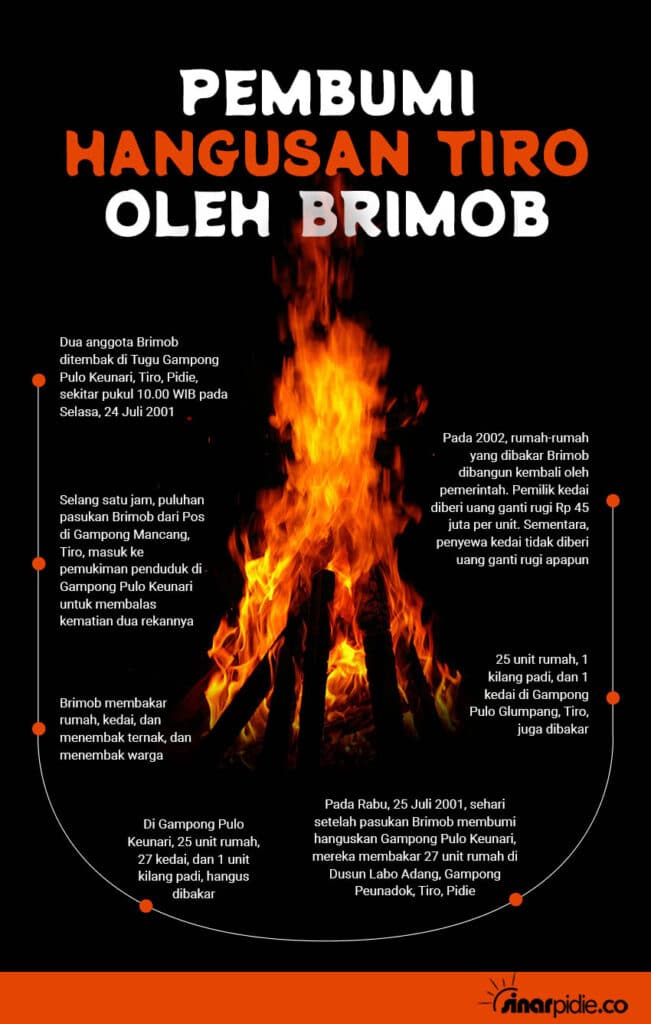
However, Dian, who has been working in the psycho-social field for 16 years, pointed out that there are major problems Aceh will face in terms of conflict victims’ recovery. According to Dian, the main obstacle now is the ratio of conflict victims’ number which is thousands are in contrast to the very limited number of personnel. She said, one of her institution's efforts to cover this inequality is through community-based psycho-social recovery.
“Psycho-social recovery relies on the victim's resilience to survive and the support from family, environment, and those closest to the victim. So, it is the victim resilience to be strengthened. But this recovery cannot completely restore to what it used to be," she said. [ ]
Source: sinarpidie.co
